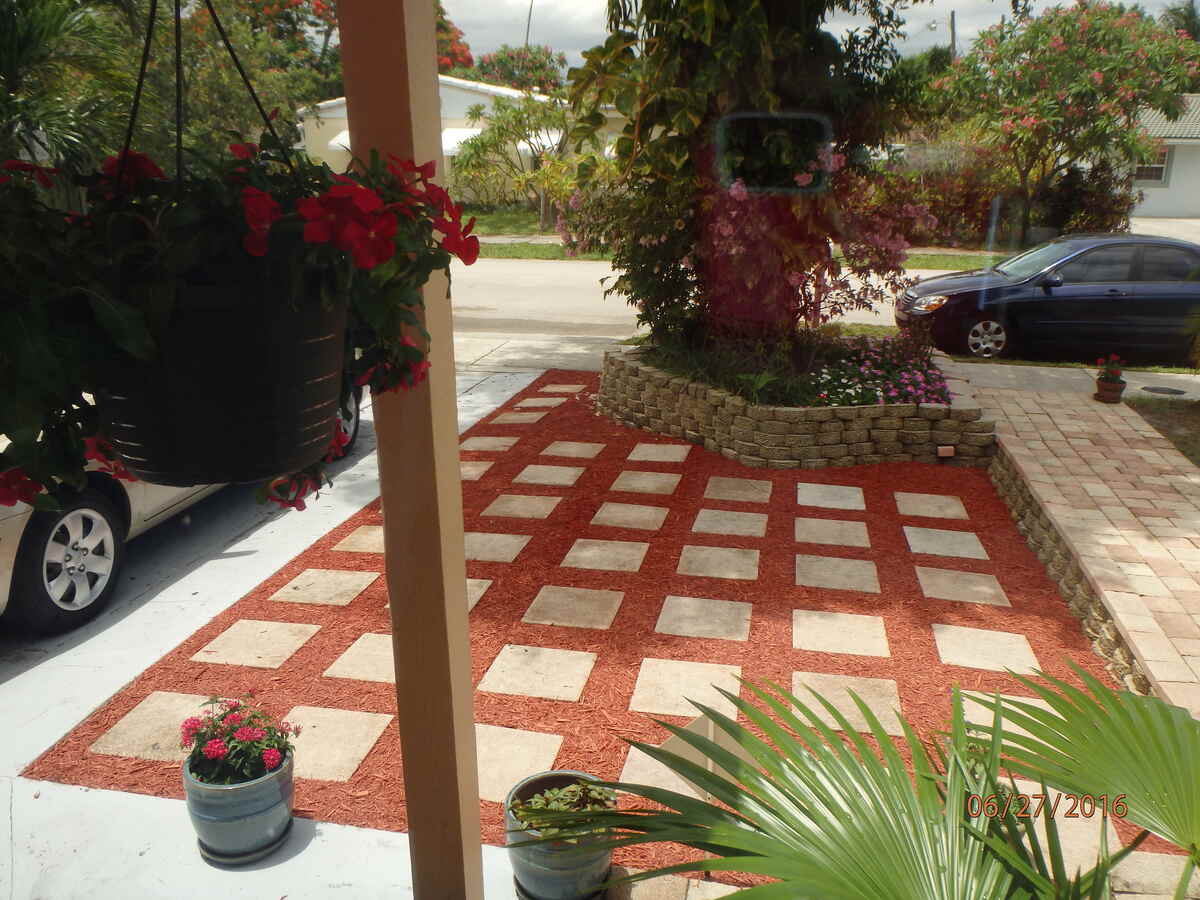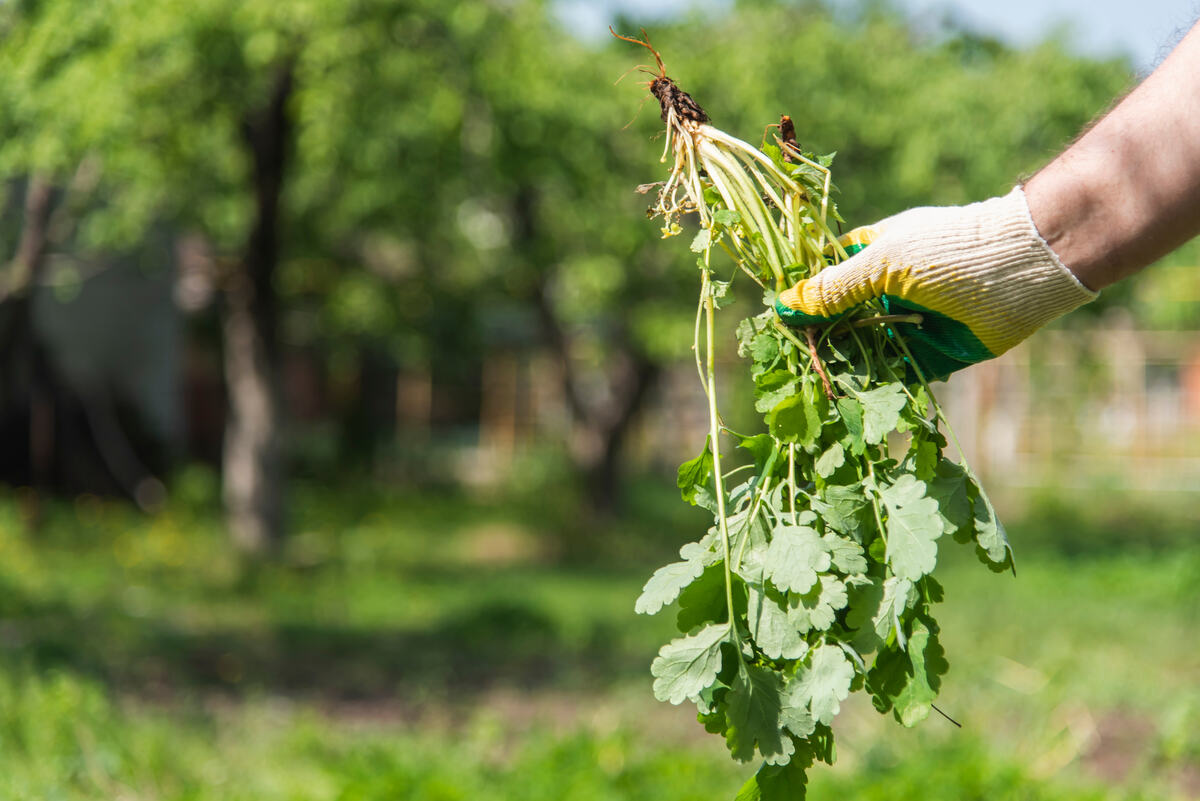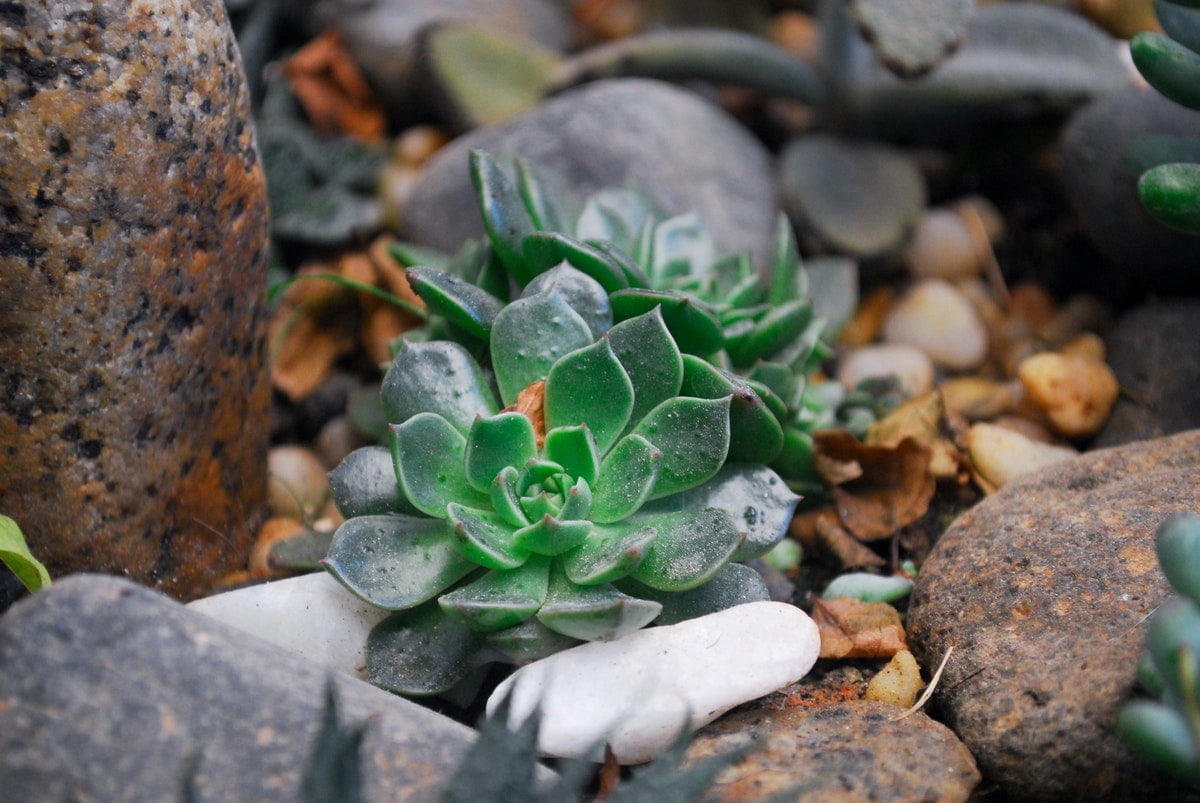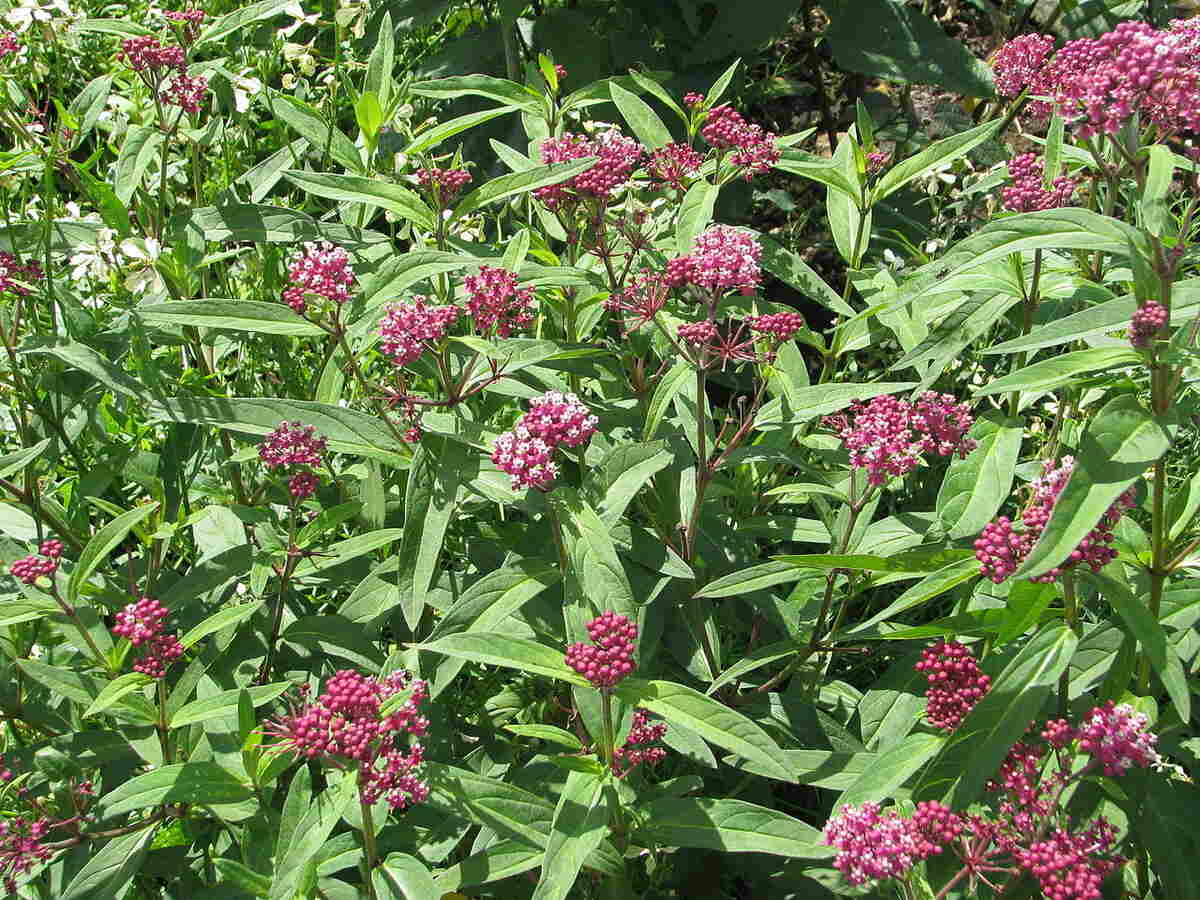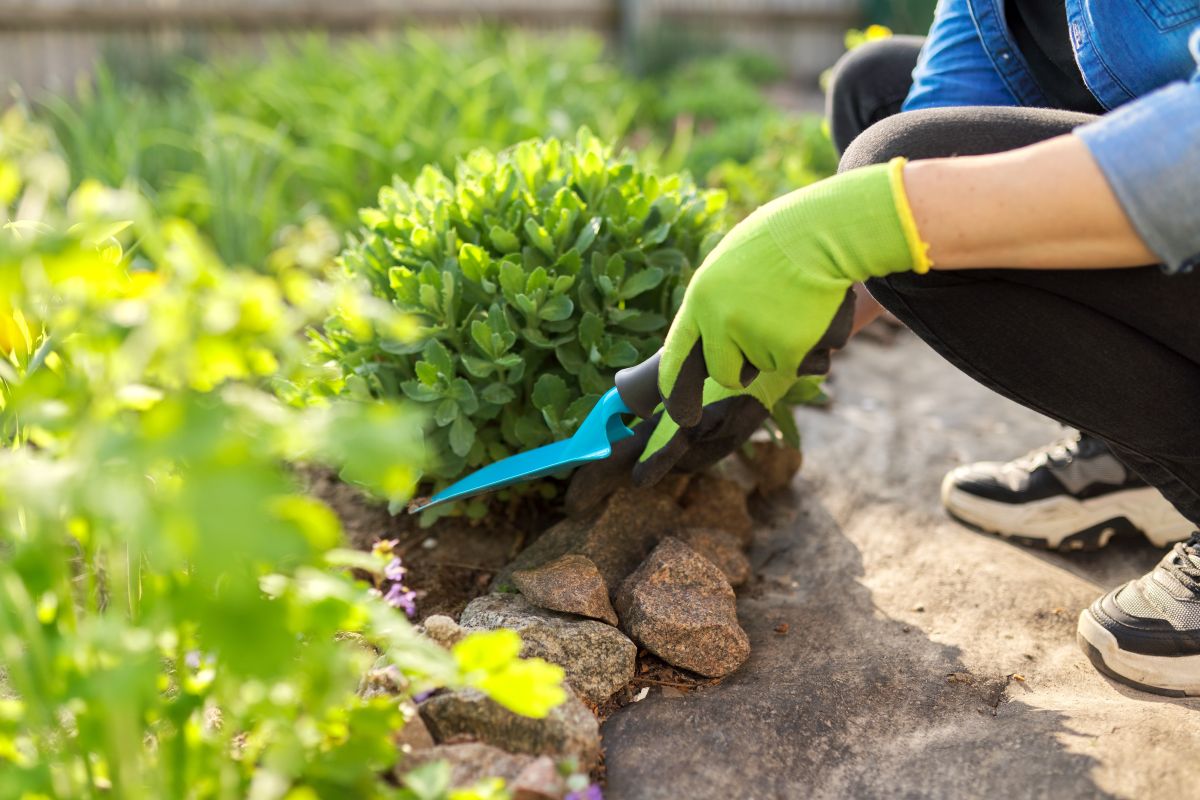
Keeping your garden weed-free doesn’t have to be a huge chore. If you know how to get rid of weeds in flower beds, you can keep your blooms healthy and looking great.
In this no-fuss guide, you’ll learn different weeding methods — from hand-pulling to using organic weed killers and applying herbicides.
| Project Difficulty: Easy to difficult, depending on the method Estimated Time to Complete: 1 to 2 hours, including the preparation stage Project Cost: Weed control costs depend on the chosen method. Paying a pro to apply non-selective herbicides to a small area can cost around $40, while treating an acre of lawn can cost around $920. |
Manual Removal
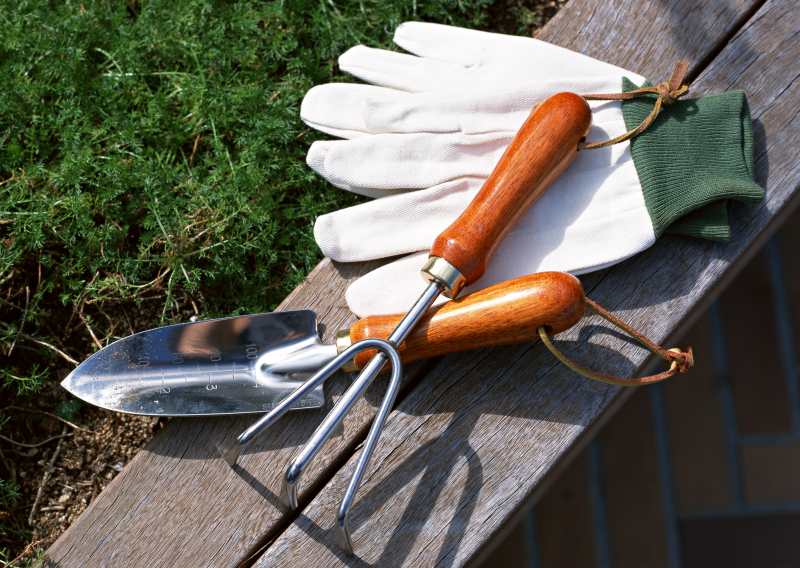
You can pull weeds by hand if you have time and don’t mind getting your hands dirty:
- Water your flower bed to soften the soil.
- Allow the water to soak into the soil, and get your hand trowel, garden fork, or weeding tool ready.
- Grab weeds at the base and pull slowly.
| If weeding is not your thing, you can hire a LawnStarter lawn care pro for help. Our customers pay an average of $96 for flower bed weeding and give our pros an average rating of 4.5. |
Organic Weed Killer
Another option for getting rid of weeds in flower beds is to use organic herbicides. These natural weed killers can help you get the job done without resorting to harsh chemicals:
Vinegar

Many homeowners use vinegar to kill weeds. The acetic acid in vinegar acts as a contact herbicide, damaging plant cells on contact by disrupting the cell walls. This dries out the weed, causing it to eventually die.
Gabrielle LaTora, agriculture and natural resources agent from the University of Georgia, says that compared to other organic killers such as boiling water and essential oils, “you will have the best shot of killing a weed with white vinegar.”
- Mix 1 gallon of kitchen vinegar (5%) with a tablespoon of dish soap and a cup of either salt, baking soda, or lemon juice.
- Transfer the vinegar solution to a spray bottle.
- Spray directly onto the weeds, but avoid getting the solution on your flowers.
- Repeat as needed, especially for tougher weeds.
My Tip: Don’t spray the weeds with vinegar solution when the weather is wet and humid, as the solution won’t stick to the weeds.
Note: Industrial-strength vinegar (20%-30% acetic acid) can kill even mature weeds. But use it with caution and always wear protective gear, as instructed on the label.
Boiling Water

Although not as effective as vinegar, using boiling water is a much simpler weed killer for flower beds.
- Boil a kettle of water.
- Pour carefully over the weeds, avoiding your flowers.
- Watch the weeds wilt in just a few hours.
Safety Tip: Be careful not to splash boiling water on yourself to avoid burning your skin.
Salt Treatments

When applied to weeds, salt can dehydrate them enough to kill them.
- Mix a small amount of table salt with water (1:3 ratio of salt to water).
- Transfer the saltwater solution to a spray bottle.
- Spray the weed’s leaves and stems with the saltwater solution.
Pro Tip: Water your flowering plants to help dilute any salt that may have reached them.
Natural Oils
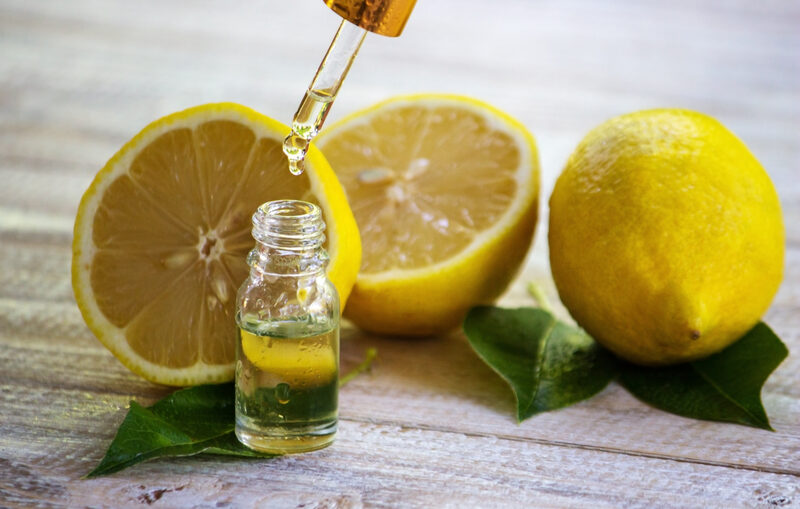
Essential oils like clove and citrus have acidic properties that help break down plant cells and dry out leaves.
- Mix 10 drops of essential oil with 1-2 cups of water.
- Spray directly onto the weeds.
- Repeat if needed.
Chemical Herbicides
If you’d rather use chemical herbicides, follow the instructions on the label and apply carefully.
According to LaTora, optimal herbicide application will depend on the situation. First, accurately identify the type of weed you want to kill to ensure better efficacy. She adds, “This can all get very confusing, so reach out to your local Extension agent for help navigating your management options.”
Here are two types of chemical herbicides you can use:
Selective Post-Emergents

To reduce the risk of harming your flowers and other desirable plants, you should use a selective post-emergent herbicide. They’re designed to target certain types of weeds, such as broadleaf or grassy ones, while leaving your plants alone.
- Buy the right type of post-emergent herbicide that targets the type of weeds in your flower bed.
- Read the product label and follow all instructions.
- Apply directly to the weeds you want to remove.
See Related: Applying Post-Emergent Herbicides to Your Lawn
Non-Selective Herbicides
Since non-selective herbicides will kill any type of plant they come in contact with, you must use them sparingly. If possible, apply this type of herbicide only when clearing areas overrun with weeds.
- Read the product label and follow the instructions.
- Spray the herbicide only on the target weeds.
Pro Tip: Apply non-selective herbicides on a calm, dry day. Wind can blow herbicide particles to your desirable plants, while rain can make the method ineffective.
| Apply the herbicides with help from one of our lawn treatment pros. Our herbicide application service costs an average of $103 and has an average customer rating of 4.4. |
Targeted Strategies for Specific, Stubborn Weeds
When weeds spread fast like gossip on social media or refuse to budge, you’ll need a different strategy. Here are targeted approaches to help you deal with stubborn weeds:
- Deep-rooted perennials: Weeds with long taproots, such as dandelions, can regrow unless you remove the entire root system. Use a long, narrow weeding tool to pull the weed, including the whole taproot. You can also apply a selective herbicide to kill deep-rooted perennial weeds without harming nearby plants.
- Creeping/Spreading weeds: Act fast when dealing with creepers like bindweed and creeping Charlie, which spread quickly through stolons or rhizomes (above-ground or underground stems). Use boiling water, vinegar, or herbicides to kill these weeds, including their stems and roots. You can also smother them with thick mulch to block the sunlight, eventually killing them.
- Persistent broadleaf weeds: If left alone, broadleaf weeds like plantain and clover can easily take over your flower bed. You can hand-pull these weeds after rain or watering, or use a selective herbicide formulated to eliminate broadleaf weeds. Then, increase the plant density in your flower bed to make it difficult for these weeds to regrow.
- Grassy weeds: With their fibrous roots and fast growth, grassy weeds like quackgrass and crabgrass can quickly blend in with your lawn and flower beds. Manually remove them when the soil is damp or use a weeding knife or hoe to cut below the crown (base of the plant). Another option is to apply a selective herbicide designed for killing this type of weed.
See Related: How to Get Rid of Weeds in Grass
FAQ About Getting Rid of Weeds in Flower Beds
Most types of mulch are effective for preventing weeds, as they block sunlight that weed seeds need to sprout.
The frequency of replacing mulch will depend on the type. Organic mulch usually needs a refresh once a year, while inorganic mulch can last 5 years or more.
No, weeds can still take root on top of the landscape fabric over time.
Leave the Work to the Pros
With these tips, killing weeds in flower beds shouldn’t be difficult. But weed control is just a small part of maintaining your lawn and garden. Add mowing, watering, and other lawn care tasks, and you’ll have your hands full most days of the month. If you’d rather enjoy your free time, leave the yard work to a local lawn care pro instead.
Read More: How to Prevent Weeds in Flower Beds
Sources:
- “Controlling Weeds in Home Gardens.” By Jill MacKenzie. University of Minnesota.
- Gabrielle LaTora, agriculture and natural resources agent at the University of Georgia Extension, Fulton County. Personal interview.
- LawnStarter internal data.
- “Weed Control in Ornamental Beds.” By David Trinklein, state extension specialist. University of Missouri.
- “Weed Management Strategies for Ornamental Landscape Beds and Ground Covers.” By Jay McCurdy, associate professor, and Geoff Denny, former assistant extension professor. Mississippi State University Extension.
- “Yard and Garden: Controlling Weeds in the Landscape.” By Aaron Steil, consumer horticulture extension specialist. Iowa State University Extension.
Main Photo Credit: Valerii Honcharuk / Adobe Stock Free / License
